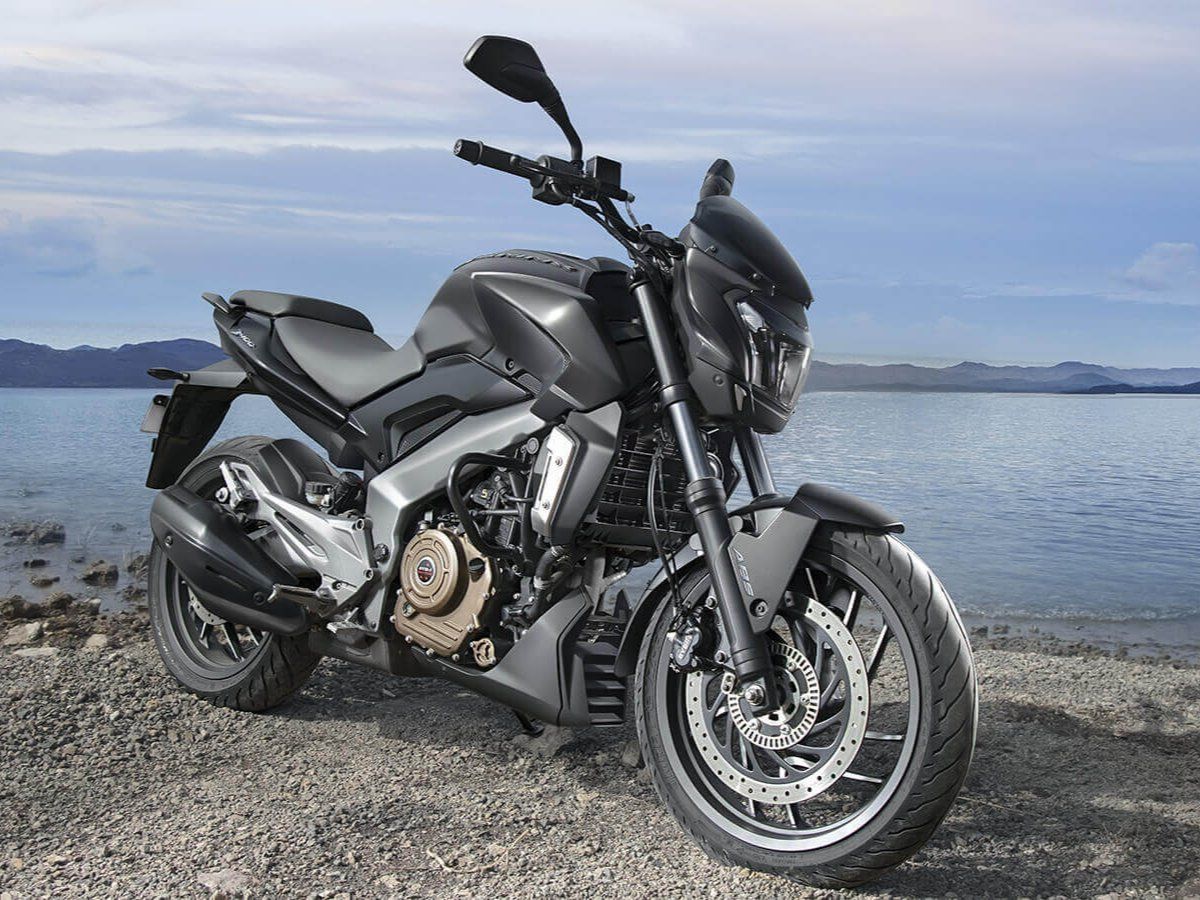Jawa 42 Review: The ultimate answer in the world of modern retros
Agni MotoInc Pvt. Ltd., the authorized distributor of Jawa bikes in Nepal, recently made their entry in the Nepali market with two Jawa bikes: Jawa 42 and Jawa Classic.
We reviewed the Jawa Classic a while back. Honestly, we fell in love with the Jawa Classic despite its few imperfections. Today, it is not about the good-old-days. It is about living in the present while still preserving the history of yesterday. It’s about the Jawa 42!
Before we begin, Jawa 42 price in Nepal starts at Rs. 620,000 (Single-channel ABS) and Rs. 648,000 (Dual-channel ABS).
To sport an affordable price tag, there is major part-sharing between the two Jawa brothers. Does the design play a factor in overall handling? Will it offer the same or improved experience?
Today, we find out!
Modern undertones
Jawa 42 comes with a classic design with a modern undertone. It resembles the Jawa Classic’s 1970s inspired design. Interestingly, Jawa found a way to make 42 feel original and more contemporary. On the front, it gets the same rounded headlamp matched with halogen bulbs all around the motorcycle.
The handlebar is separate from the headlamp housing. It is a blacked-out single-piece handlebar, topped with an off-set inverted analog-digital instrument cluster. Jawa 42 comes with a more muted design, less chrome finishing, and eye-popping colors. Sleek lines and graceful curves are less noticeable, especially with the muted styling.
Design changes
If Jawa had copy-pasted everything from the Classic, then 42 wouldn’t be… 42. While the components are shared between the two siblings, it is visually different due to simple design change. These unique design elements include smaller front fenders, exterior fender guards, and a rear saree-guard.
Jawa 42 is available in six different colors: Nebula Blue, Comment Red, Starlight Blue, Lumos Lime, Halley’s Teal, and Galactic Green.
Refined engine
Jawa 42 gets a BS6-Compliant Engine which is a 293cc, Single-Cylinder, 4-stroke, Liquid-cooled, Fuel Injected DOHC engine. It can generate a max power of 26.51PS and max torque of 28Nm. Moreover, it is mated to a 6-speed transmission.
Both Jawa 42 and Jawa Classic are powered by the same engine. While Jawa 42 misses out on “FI features” like the Side-Stand Engine cutoff, it still comes with an advanced 300cc engine with Liquid-Cooling, Fuel-Injection, and DOHC.
Braking performance
Jawa 42 is available in two braking options: Front Disc only and Dual Disc. For the review, we had the Dual Disc variant. As expected, the dual disc improves the overall performance considerably! Moreover, the braking experience is precise and confident inspiring.
City riding suspension
Jawa 42 gets a front Telescopic Hydraulic Fork and a rear Twin Shock Hydraulic with Gas-Charged Canister. The suspension shines best on good roads like the highways, comparatively lesser so on rough terrains. Obviously, it is much due to the less suspension travel, putting the experience on a stiffer side.
Same old seats
I think a well-cushioned seat could have helped improve the ride quality. Both Royal Enfield Classic 350 and Bajaj Avenger 220 ABS sport a similar short-travel suspension setup. However, the experience is made more comfortable with the comfort-focused seating cushion. Unfortunately, the Jawa 42 comes with a well-designed seat, but it isn’t much for comfort. Furthermore, the lack of comfort is mostly noticeable in a long-distance trip.
Fuel tank capacity and mileage
Jawa 42 comes with a 13-liter fuel tank capacity. Based on our test, we average mileage between 35-38 Kmpl. Since the Jawa is powered by a Fuel Injected engine, the mileage is more accurate and consistent.
Other features
Jawa 42 includes retro-fitted elements like the Halogen Bulbs and an offset Inverted Analog Instrument Cluster with Digital Odometer. For the modern undertones, Jawa went with the blacked-out finishing.
In any case, the halogen headlamp does the job well. Both high beam and low beam provide good visibility on darker roads for improved night-time visibility. I still prefer an LED over halogen, but it is passable for a retro motorcycle.
Again, an off-set inverted analog cluster looks cool. However, it is fairly difficult to read while riding a motorcycle. Jawa motorcycle went out of their way to include a digital odometer
With that being the case, Jawa 42 could have featured an additional digital trip meter to boast its contemporary undertones.
My experience with Jawa 42
Refined performance
Jawa 42 features the most refined engine in this segment, putting vibrations at a down low.
However, it isn’t completely absent though. It seems like the vibrations go hand-in-hand with the RPMs. Higher the RPMs, the higher the vibrations. Eventually, the vibrations do kick in. But it always starts from the footpegs moving all the way to the handlebar.
Like the Classic, there is a slight delay when the torque kicks in, a more linear feel. So, the rider must always pull hard on the throttle to fully experience the pickup. For making it one of the most fun experiences, you should ride it in a higher gear at mid RPMs.
Improved handling
Like my experience with the Classic, the motorcycle initially looked intimating. After riding it for almost a week, Jawa 42 comes across as a fun motorcycle, with a good sense of practicality.
Forty-Two even managed to further improve the good handling of the Classic. Despite sharing a 165mm ground clearance and 170Kg Kerb weight, the motorcycle feels more practical and easier. I did not expect the low handlebar to make this much of a difference. It is even easier to maneuver through bad roads, traffic, and tight corners.
Conclusion
Jawa 42 offers itself to be a unique motorcycle. In that regard, it offers everything Jawa Classic does and then some more. Perhaps, that’s why Jawa came up with the name 42.
As author Douglas Adams puts it in his book “The Hitchhiker’s Guide to the Galaxy,” the answer to the ultimate question to life, the universe, and everything is 42. By offering more than Jawa Classic at a much more affordable price, Jawa 42 might just be the ultimate answer in the world of modern retro motorcycles.
Bajaj Dominar 250 Review: Bringing Dominar DNA to 250cc Segment!
Bajaj Dominar 250 marked the entry of Bajaj into the 250cc segment. With 250cc becoming growingly popular, it was just a matter of time before Bajaj introduced its take on that segment. That is how we got the Bajaj Dominar 250. After months of anticipation, it is finally here!
HH Bajaj, the authorized distributor of Bajaj bikes in Nepal, has launched the all-new Bajaj Dominar 250, bringing its A-game against its fierce rivals. With an introductory offer of Rs. 499,900, the Dominar 250 carries the aesthetics of its bigger 400cc sibling and many of its segment-leading features.
How does it compare against the most impressive bigger brother? Does it have the capabilities to disrupt the 250cc segment?
Today, we find out!
There is a lot to unpack here in an otherwise familiar sports tourer. Without further ado, this is the full review of the all-new Bajaj Dominar 250 in Nepal.
Bajaj Dominar 250 Review
Muscular Design
Bajaj Dominar 250 follows in its big brother’s footsteps.
Twin-Barrel Exhaust, New Mirrors, USD Forks, and Secondary Display are some of the previously seen features making their mark in the new segment. Interestingly, it is the first time we see the design of this caliber making its way into the 250cc segment.
Let’s start from the front.
Bajaj Dominar 250 continues its dominating styling with its massive multi-LED headlamp alongside chunkier front forks and blacked-out visor. The side profile also gets the same muscular design.
It has a sense of an aggressive stance, complete with its massive sculpted tank and multiple body cladding design. Quite frankly, there isn’t much difference since we talked about the Dominar design.
The rear portion still comes with the split grabrails right alongside the classic Bajaj LED taillamp. If you were someone not familiar with the Dominar’s lineage, you could confuse 250 with the 400.
Both are practically similar, sharing elements with few key differences.
Retuned 250cc FI Engine
Bajaj Dominar 250 is powered by a 248.77cc, Single-Cylinder, Liquid-Cooled, 4-Valve, DOHC Engine. It can generate a max-power of 27PS at 8500rpm and a max-torque of 23.5Nm at 6500rpm.
Moreover, it is mated to a 6-speed gearbox featuring an assist and slipper clutch. Instead of triple-spark ignition, Dominar 250 will feature a traditional twin-spark configuration. We have seen the same engine iteration before in KTM Duke 250 and Husqvarna 250.
Bajaj Auto has tweaked the engine around the headers, resulting in lower compression and better mileage for a better sports tourer appeal. Unfortunately, it gets a performance reduction of 2.6PS power and 0.5Nm torque along with a reduced rpm limit. Additionally, it should be noted that this is not a BS6-compliant engine. Rather, it follows the emission standards of EURO4.

Segment-Leading Features
While the Bajaj Dominar 250 is a completely new motorcycle in the 250cc segment, it comes with familiar features, as seen in Dominar 400.
However, it should be noted that most of the features are segment-leading. Moreover, the competition lacks a significant number of features offered by the Dominar 250.
Braking Performance
Bajaj Dominar 250 comes with a 300mm disc at the front and a 220mm disc at the rear. It is dual-disc braking with Dual-Channel ABS as standard. Compared to the Dominar 400, it is 20mm smaller in front disc size. However, the real-world performance feels uncompromised.
The braking feel is precise and accurate. As expected, the overall braking performance is confidence-inspiring. While it isn’t up to the level of Suzuki Gixxer 250, it feels pretty close.
Suspension Feel
Talking about the suspension setup, it gets Telescopic USD forks at the front and Multi-step adjustable Monoshocks with Nitrox at the rear. Compared to the Dominar 400, Dominar 250 features 6mm smaller USD forks.
In terms of suspension experience, it comes with a surprisingly softer feel. It aligns well with the city-riding objective. It is a sort of mixture between soft and stiff feel. The usual city bumps are easily absorbed. Moreover, the suspension is stable in high speed riding as well.
Seat Comfort
Like every other Bajaj product, the seat cushion is one of the best cushioning. It feels premium with adequate comfort in a long-distance ride.Interestingly, the split seat setup has enough space for both rider and pillion, making it one of the more comfortable seats in the segment.
Fuel Tank Capacity and Mileage
Bajaj Dominar 250 comes with a fuel tank capacity of 13-liters with a claimed mileage of 35 Kmpl.
In our test, we rode the Dominar in mid-gears (Gear 3 and Gear 4) at an average speed of 50Kmph.
We were successful enough to achieve an average mileage of 28-30Kmpl. If you ride the Dominar 250 more economically, it should achieve the claimed mileage.
Slimmer Tires
Let's move onto something that is changed.
Bajaj Dominar 250 comes with a 100/80 front tire and 130/70 rear tire. Both are 17-inch tubeless tires.
Compared to the Dominar 400, both the front and rear tires are slimmer.
Interestingly, these are the same tires, as seen in Bajaj Pulsar NS 200. Due to the wider body design of the Dominar, the tires feel ridiculously slim (especially the rear one).
Regardless, there isn’t much difference in ride stability.
It brings the same level of stability and control as it did in Pulsar NS 200. However, the rear portion takes a hit in terms of appearance.
Other Features
Negative Dual LCD Display, Cast Aluminum Mirrors, and Dual Port Exhaust are few other features found in the new Dominar 250.
The overall features are nice.
However, I still feel like there is a place for improvement in the LCD. It is static in nature, lacking dynamic features seen in the 2019 Dominar 400. Furthermore, it is difficult to read in direct sunlight.
Talking about the mirrors, they are styling and provide good visibility.
My Experience with Bajaj Dominar 250
Dominar DNA
Bajaj Dominar 250 took me back to the review days of the Bajaj Dominar 400. I think that’s why I keep referencing and comparing them with one another.
Both are quite different beasts in their respective segments. However, the Dominar DNA persists!
As an example, the 180Kg weight takes some ‘getting-used-to’. Likewise, the body and riding stance feels so much like the Dominar 400.
The initial experience feels like a Dominar with its superb low-end grunt and mid-range performance. The vibrations are at a minimum, emulating the classic Bajaj vibration feel.
After opening the throttle, the performance struggles to keep up with the demand. The expected Dominar 400-level pickup seems to be missing on the 250cc sibling.
I mean, you feel the power… but much of the experience feels missing due to lack of torque vibes.
This is where it gets interesting.
The lack of torquey feel is only felt in open roads, like the highways. In traditional city streets, it does a fairly good job.
Being oriented mostly for city riding, I think Bajaj has done a good job at that.
For the most part, the new 250 successfully brings the Dominar DNA to the table.
Conditional Handling
This is interesting.
Bajaj Dominar is a sports tourer, made for highway riding. So, it was built with that in mind.
On long roads, Bajaj Dominar 250 handles like a beast!
It remains stable in high-speeds (above 80Kmph) with no sign of major vibrations. However, the handling struggles a bit in tight areas, especially in sharp corners.
You can’t really turn on a sharp corner with full confidence due to the large turn radius.
So, the handling will depend on the condition. Nonetheless, I got used to it after riding it a few more times.
Long Distance Ride
During our test, we did manage to pull off a long-distance ride. We traveled from Kathmandu to Banepa, limiting our routes to highways.
After a back and forth ride, I notice three interesting things.
Firstly, the Dominar 250 is fairly comfortable on a long ride. There is a place for getting used to it, but there were no sore back or uncomfortable seats after the end of the ride.
Secondly, there were numerous times where I kept down-shifting for quick overtakes. It was even more comfortable with the Slipper Clutch for safer down-shifts.
While the power is great, the lack of torque is slightly disappointing on open roads.
Finally, Dominar 250 shines while it is in motion. However, I loathed it whenever I had to stop at a traffic light or traffic jams.
I attribute that feeling to the 180Kg weight.
Battle with the Competition
Bajaj Dominar 250 competes against the likes of Suzuki Gixxer 250, Husqvarna 250, KTM Duke 250, and Yamaha FZ25. Husqvarna 250 and KTM Duke 250 come from the same family, whereas Yamaha FZ25 doesn’t even come close!
If you filter out the herd, Dominar 250 goes head-on against the Gixxer 250.
One Complaint
Like every other motorcycle, Bajaj Dominar 250 comes with good stuff and bad stuff.
With Bajaj Dominar 250, I think my most important complaint would be the 180Kg kerb weight. Dominar weighs more than 30Kg in comparison with the competition. It takes a slight hit on its practicality as well as its performance. If you can fully consider this, Bajaj Dominar 250 will come across as a good offering.
Conclusion
In a world where motorcycles are getting hella expensive, Bajaj Auto comes with another 250cc machine priced at Rs. 499,000.
While it is expensive, it also does much to justify its high pricing.Unfortunately, the steeper pricing will keep people from experiencing the true thrill of the newest Dominar.
If you do have the capability to experience the new Bajaj mammoth, just know, the Bajaj Dominar 250 brings the Dominar DNA to the 250cc Segment.
Pros, Cons
Dominar 400 Inspired Muscular Styling, Slimmer Tires Affecting Its Looks
Segment Leading Features, Heaviest Bike in Its Segment
Good Low-end Grunt with Mid-range Performance, Down-shifting Required for Quick Pickup
Good Mileage for City Riding, Slight Difficulties in Tight Cornering
Well-Balanced Suspension with Excellent Braking, Lack of Performance Feel Under 4000rpm
Bajaj Dominar 250 Design Highlights
- 400 Inspired Muscular Styling
- Excellent On-Road Presence
- Multi-LED Headlamp and Taillamp with LED Indicators
- Aggressive Fuel Tank
- Blacked Out Single-Piece Handlebar
- Cast Aluminum Mirrors
- Split Seats with Split-type Grab bar
- Dual-Barrel Exhaust
Bajaj Dominar 250 Feature Highlights
- Beam Type Perimeter Frame
- Up-Side Down Front Forks
- Dual Disc Braking
- Dual-Channel ABS
- Assist & Slipper Clutch
- Dual Exhaust
- Stylish New Mirrors
- Reverse LCD Dual Console
- Full LED Headlamps with Split LED Taillamp
- Split Seat Setup
- 13-Liter Fuel Tank Capacity
NTA approves Ka Band in Nepal
Nepal Telecommunications Authority (NTA) has approved the frequency ranges for Fixed Satellite Service within the Ka band segment (19.7-21.2 Ghz Downlink, paired with 29.5-31 Ghz Uplink) for use in Nepal.
With the approval of the Ka band segment, which was recommended by the NTA to the government in January, all regions in the country are expected to benefit from faster internet at affordable rates. The approval means that businesses, communities and government agencies within Nepal will soon access services from one of Asia’s latest, state-of-the-art satellites: Kacific 1.
The Kacific 1 satellite, owned by Kacific Broadband Satellites Group, uses Ka band technology designed specifically to provide reliable, high-speed broadband internet to rural and remote populations through concentrated spot beams and simple easy-to-install onsite 1.2m antennas. This technology, although new in Nepal, has been successfully used in other countries in Asia, including ones with similar mountainous geographies.
Nepal’s mountainous terrains make it difficult for ground-based technologies to provide widespread and reliable coverage, and a large swath of the country cannot be connected with cable-based technologies. This means that for the 22.8 million citizens living in rural areas—around 80 percent of our 28.6 million population—satellite technology is the only way for individuals and organizations to access broadband. All they would need is a small, easy-to-transport and rapidly deployable satellite dish.
Nepali youths take to hunting bugs online
Bugs have forever vexed humans. Even in the digital world, they exist everywhere—in mobile applications, on websites, and on internet platforms. All netizens have probably encountered some form of these ‘bugs’ at least once, even when randomly scrolling Facebook or Twitter. But many are unaware that reporting valid bugs to developers may lead them to a bounty!
A bug bounty program is an opportunity to earn money by exploring apps and websites and reporting any found bugs or vulnerabilities to the developers.
Many Nepali youths under the age of 25 have gotten these bounties from various companies, and they are being recognized at national and international levels. Saugat Pokharel, 22, from Kathmandu, who is currently studying physics at the Amrit Science Campus, received his first bounty of $2,000 from Facebook two years ago. He discovered a bug while messaging from his Facebook page “Students of Nepal,” reported it immediately, and was rewarded. At the time, Pokharel did not know he would get paid for just reporting a bug.
 Saugat Pokharel
Saugat Pokharel
He now has tools and basic coding skills to help hone his hunting skills. “I have been rewarded by different companies, perhaps 16-17 times in all,” he says. So far, Pokharel’s single-highest bounty has been $13,000 that he got from Instagram for reporting exposed users’ date of birth and email address, jeopardizing their privacy.
Binit Ghimire, 20, a second-year Bachelor in Computer Engineering student from Chitwan, received his first bounty of $750 from Facebook in November 2018, just after around 3-4 months of starting bug hunting. By now, over 70 companies and organizations have thanked Ghimire for helping them secure their digital assets and systems through bug hunting. “In the process, I have earned over $10,000,” he says.
 Binit Ghimire
Binit Ghimire
Even teenagers are stepping into the field. Sudip Shah, 18, a grade 12 student from Pokhara who started hunting during the 2020 lockdowns, got a bounty of $500 on his first valid submission for a bug related to information disclosure. He had found an unusual error whereby users could see the names of the Facebook page’s admins, and reported it to Facebook Safety Center. “Before that, I had submitted over 50 reports to Facebook and over 30-40 reports to other bug bounty programs,” he says.
Shah was inspired by his first reward and started looking for security loopholes on different platforms. He even got into Facebook’s Hall of Fame (where Facebook lists and thanks people for a responsible disclosure) in August 2020. Shah has till date made around 10 valid submissions to Facebook alone.
 Sudip Shah
Sudip Shah
Hacker to hunter
Ajay Gautam, 22, from Kupondole, Lalitpur, is a tech enthusiast who started wi-fi hacking from his childhood. When the news of bug bounty programs started circulating on social media, Gautam, who now has a Bachelor's degree in computing and is working at Nassec, a cybersecurity firm, felt it might be his cup of tea. He started in 2016.
 Ajay Gautam
Ajay Gautam
“I was number 23 on Facebook’s Hall of Fame 2020. Besides Facebook, I have also worked as a bug hunter for different private companies from Australia, Singapore, and other counties,” he says. Gautam has gotten the highest single bounty of $5,500 for tracking a vulnerability in Instagram messaging.
Prava Basnet, 24, a management student from Kathmandu, recently got $3,000 from Facebook for finding bugs in Facebook and Instagram. One bug made Instagram share stories with Facebook without the users’ consent. The next one she discovered was a bug related to linked accounts on Facebook and Instagram, which in turn increased chances of the accounts being hacked.
 Prava Basnet
Prava Basnet
A post about Saugat Pokharel on the Facebook group 'Routine of Nepal Banda' caught her eye six months ago. Curious, she did a little Google research and found that such bugs could be reported even by someone without technical skills—and she could get better at it with practice. That was for her the start of a career.
A common misconception about bug bounty hunting is that it requires strong knowledge in coding and programming. Of course, that could be helpful, but it’s not a prerequisite. The level of skills you need depends on the type of bugs you are hunting, say those ApEx talked to. Most say they are into bug hunting as freelancers.
Sometimes, companies launch hunting programs for registered hunters on platforms like Bugcrowd. When somebody reports a valid bug, the company issues a bounty. Facebook has its bug bounty program called the Whitehat where users can report security bugs. Twitter users can report possible vulnerability to its security team through HackerOne, a bug hunting platform. Chances of finding bugs are high whenever a website or app launches new features. Not all the reports bug hunters send are valid though.
Nepali companies unaware
Though many Nepalis are into it, most Nepali companies still don’t have good bug bounty programs and thus Nepali hunters mostly report to international companies.
Even globally, bug hunting is a new concept, coming into practice in earnest only after the start of Bugcrowd in 2011, according to Pokharel. Bug hunting could be a serious career option for many if more Nepali companies offered such bounties.
For Ghimire, bug bounty hunting in Nepal is still in a primitive phase. One reason is that Nepali hunters mostly focus on Facebook and Instagram. Perhaps they are easier platforms to find bugs, Ghimire adds. “Nepali companies should also start giving bug bounties to help secure their systems,” he suggests.
According to Shah, many Nepali companies are unaware that they can control data leakage and discover other cyber vulnerabilities on their websites through a bug hunting program. Even when such programs are launched locally, payments are meagre. “They need to do more, even for their own sake,” Shah recommends.















